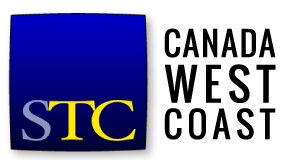Since its introduction, ChatGPT, an artificial intelligence (AI) chatbot that lets people seek answers to a variety of solutions and topics, has been playing an essential role in supporting people with various tasks in their personal and professional lives, from writing content to job-seeking to planning weddings.
It doesn’t come without controversies: for works that require originality, such as résumés, ChatGPT might produce duplicate and robotic versions that do not distinguish you from the enormous pool of applicants and might contain inaccurate content. This is pertinent if the job-seekers fail to edit and revise the work. However, if used wisely, ChatGPT can help you save brainstorming time, polish your craft, and win your interview.
Step 1: Write a metric-focused professional summary
To get started with ChatGPT, you can sign up using your email address. Next, you can ask ChatGPT to summarize your experience into a concise, eye-catching summary based on your targeted job description. A sample prompt could be: “Based on these experiences, write a professional summary that includes quantifiable results for this job description.” You would replace the experiences with your résumé and the job description with the position’s tasks and qualifications. You can also ask ChatGPT to use specific words that human or automated screeners might be looking for.
Step 2: Create tailored résumé bullets
You could stop after Step 1: simply ask ChatGPT to use your experience and the job description to create a résumé. That works, but you can personalize it more, using multiple prompts to generate résumé-worthy points. Some sample prompts:
● Using [these experiences], create résumé bullets with the action verbs provided in [this job description].
● Write résumé bullet points with quantifiable metrics for [these experiences] based on [this job description].
The key to using ChatGPT for personalization is to be specific with your request. Instead of copying your full résumé, test it with one experience and certain parts of the job description to find the right match. Either way, ChatGPT can save tons of time you might have spent starting from scratch.
Step 3: Create a personalized cover letter
Using ChatGPT in writing a cover letter can be tricky because there aren’t many prompts to generate responses that give specific details and personal experiences. However, based on your résumé and a job description, ChatGPT can create a cover letter that sets the foundation for you to add more insights and unique background. Sample prompts:
● Create a cover letter’s introduction paragraph for [X position] in [Y company], highlighting [Z experience from your résumé].
● Generate a full cover letter based on [this résumé] and [job description], from an international student perspective.
● Write a cover letter paragraph using [this experience] to match [this task], highlighting important metrics and technical writing skills.
Regardless of the convenience that ChatGPT brings, it’s important to maintain authenticity in your cover letter. It’s the key ingredient to distinguish you from other candidates, so adding your goals, background, and personal interests is essential.
Step 4: Analyze your technical writing portfolio
Another key factor for successful technical writing applications is a polished portfolio. ChatGPT offers options to create a portfolio from scratch, but for beginners, you can start by asking it to provide suggestions and feedback on your idea, content, and style. Sample prompts:
● Generate writing sample ideas.
● Analyze the layout and style of your portfolio.
● Provide feedback for certain writing pieces.
Despite the concerns about authenticity, ChatGPT and other AI-based tools are gaining popularity by helping job-seekers save time and add more variety to their résumés. Thus, with the perfect blend of ChatGPT’s support and your own personal touch, you can gain an advantage in the long and competitive job-hunting process.
